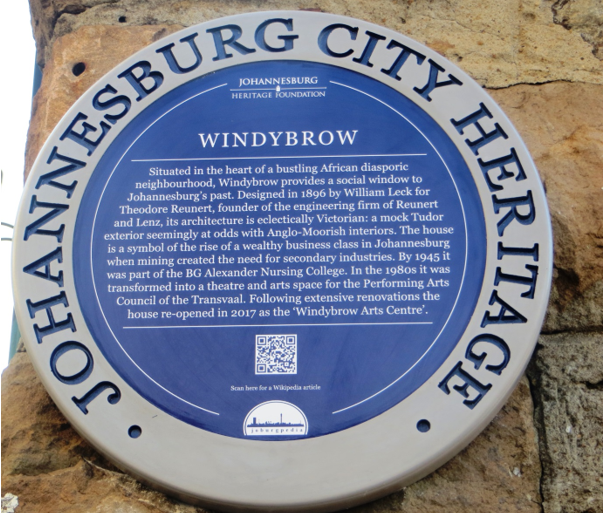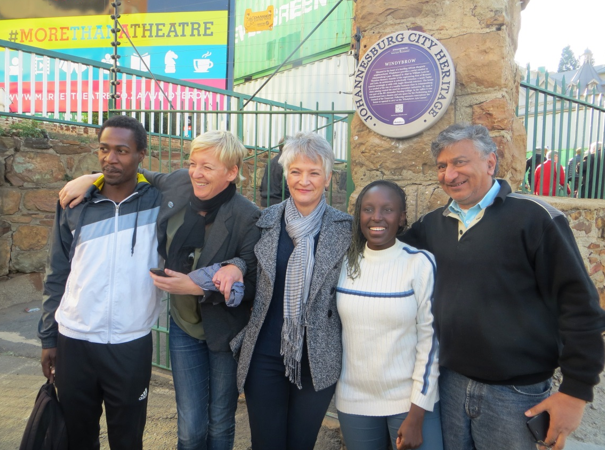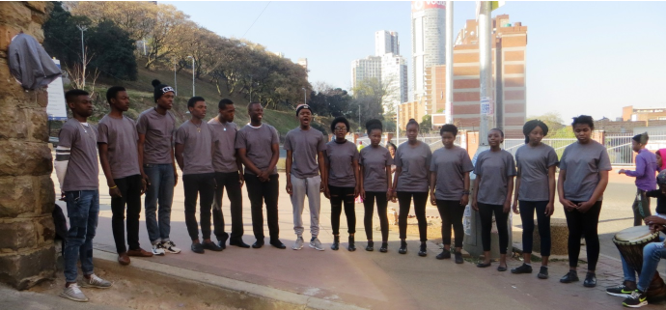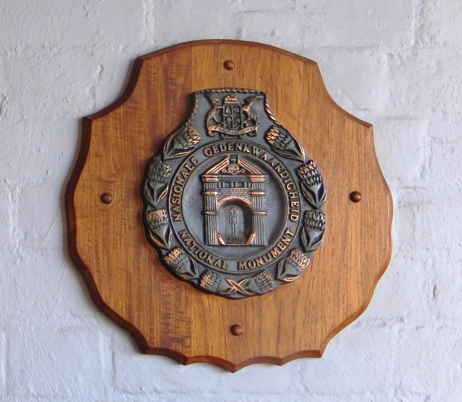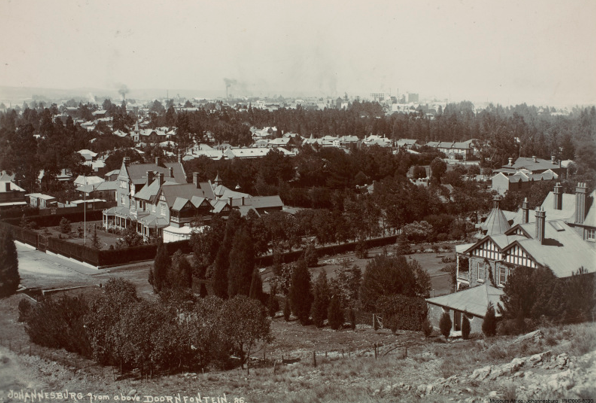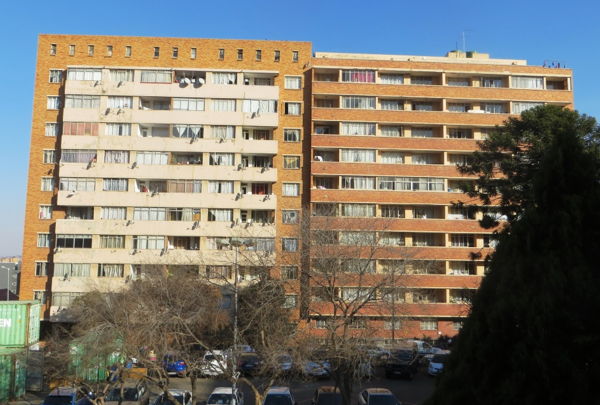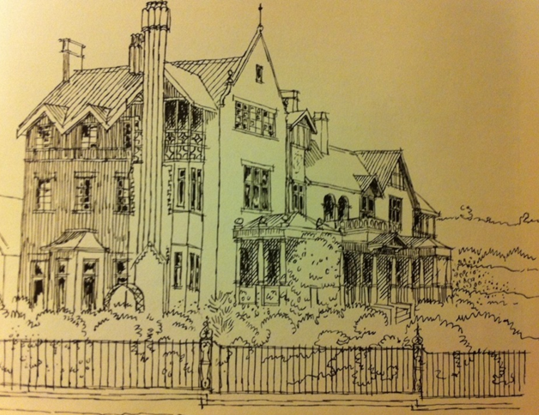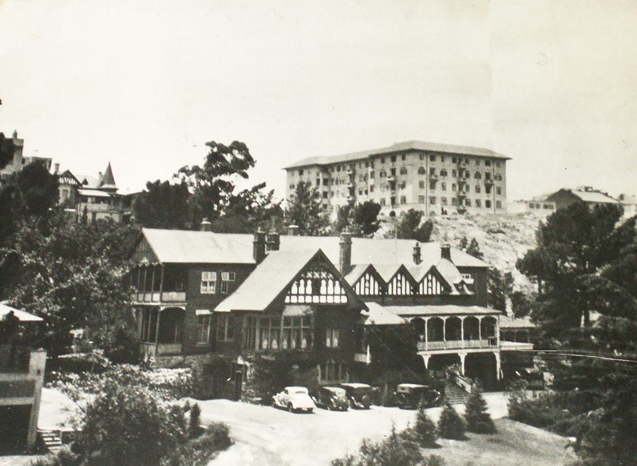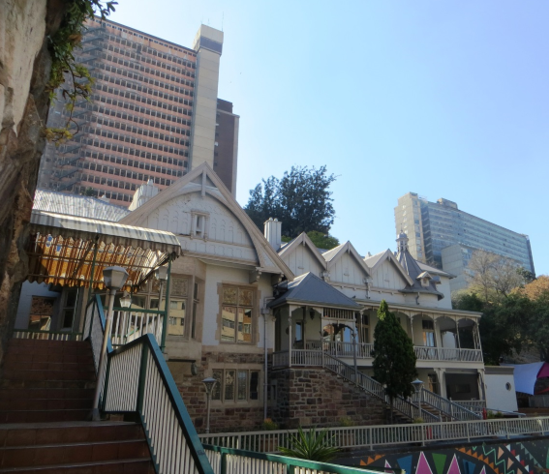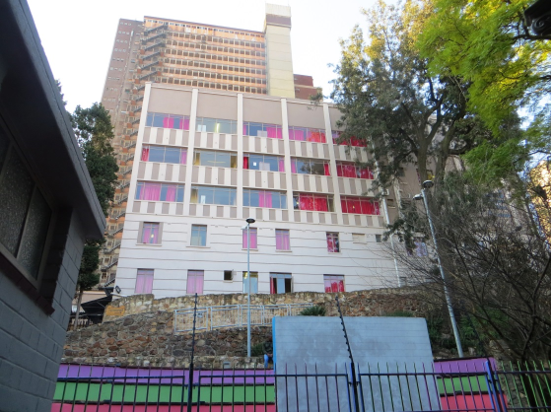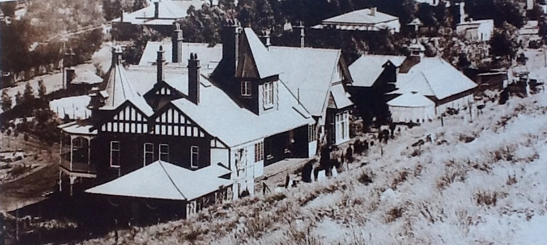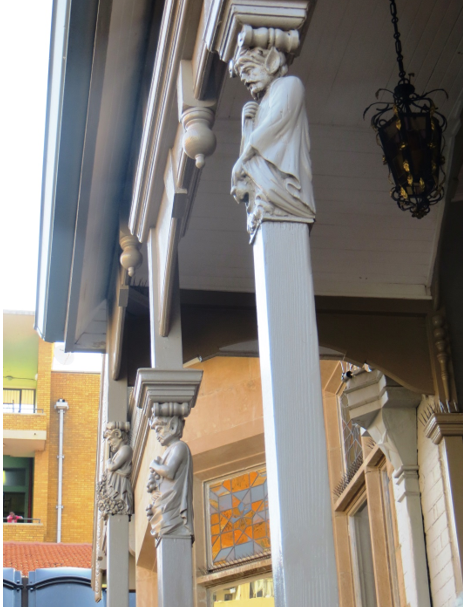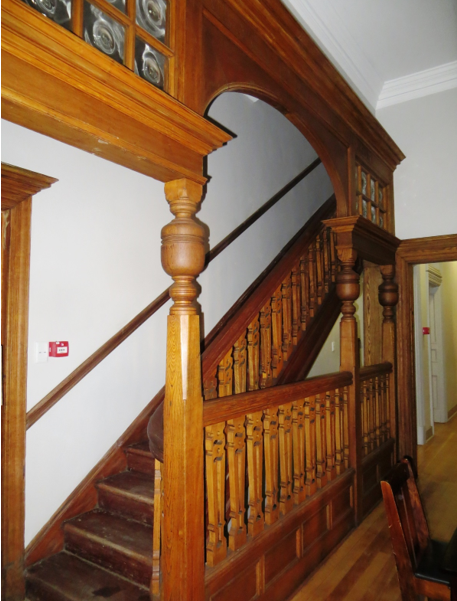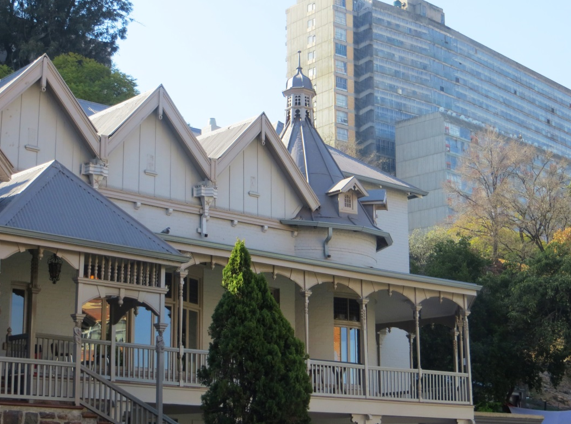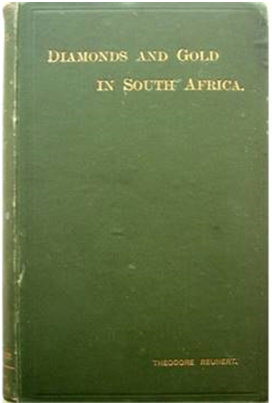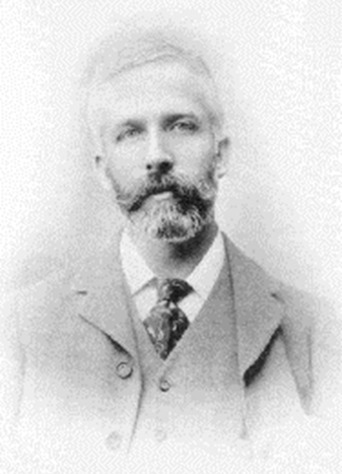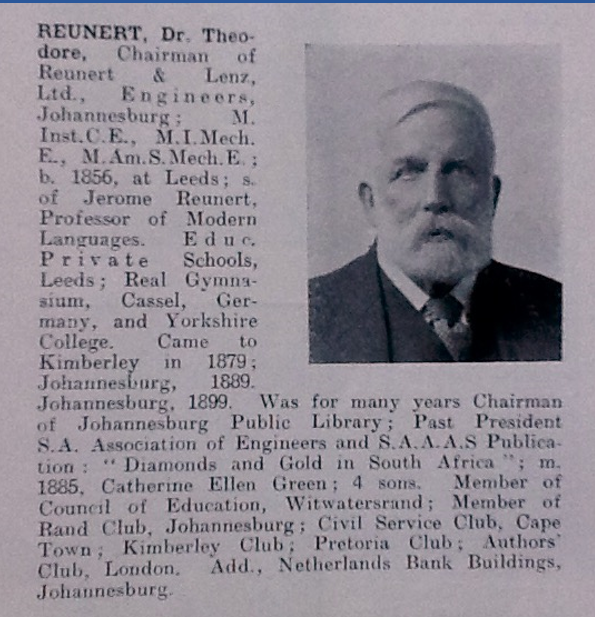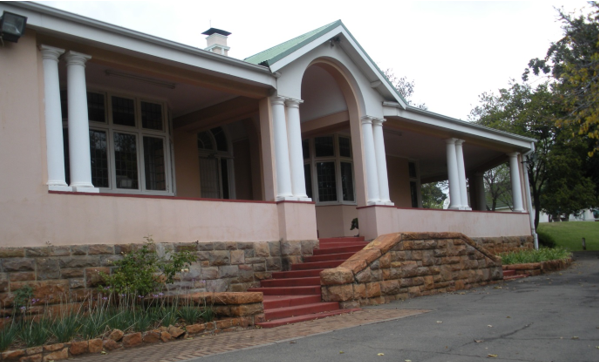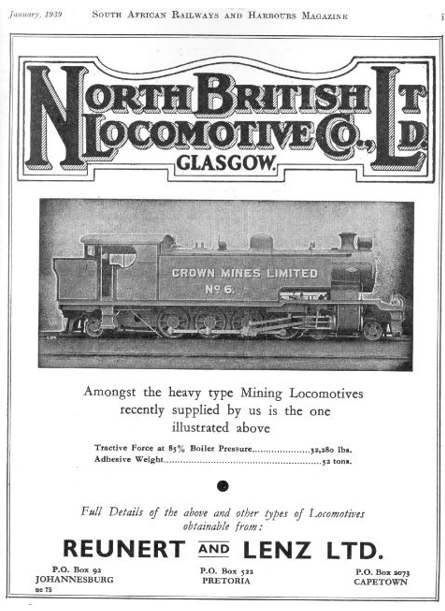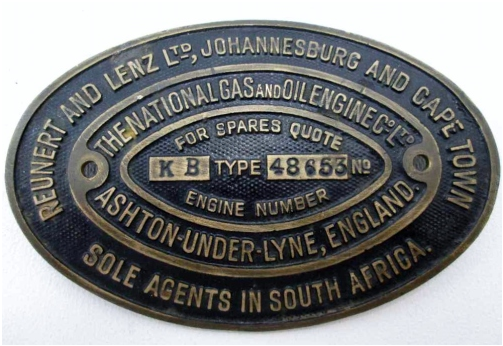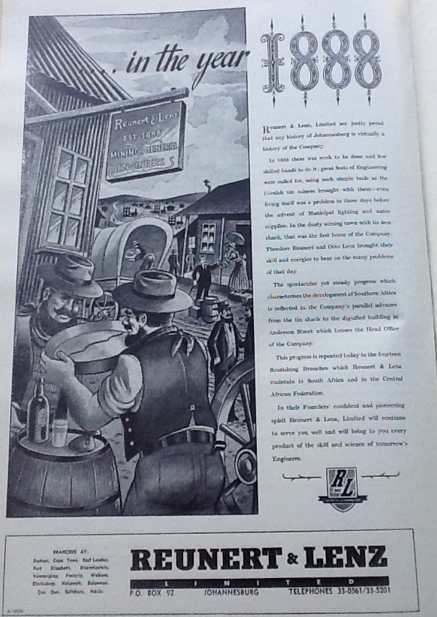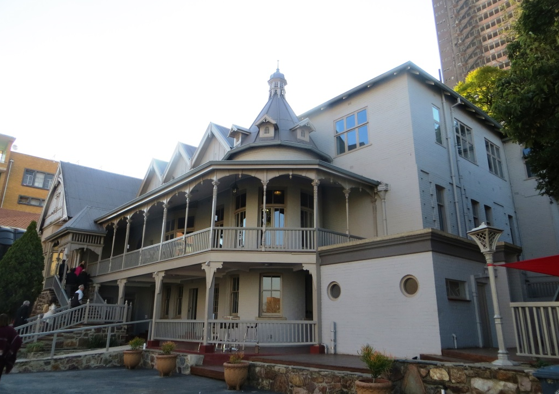
Disclaimer: Any views expressed by individuals and organisations are their own and do not in any way represent the views of The Heritage Portal. If you find any mistakes or historical inaccuracies, please contact the editor.
On Saturday 22nd July, a Johannesburg Heritage Foundation Blue Plaque was unveiled at Windybrow. 2017 saw the reopening of Windybrow as an Arts Centre under the auspices of the Market Theatre Foundation. In the last two years Windybrow has been restored. The team has been led by Christine Smith McDonald, Ismail Mahomed and Jennifer van den Bussche who are passionate about heritage and see a role for a fine restored heritage building that relates to the surrounding community and has a contemporary purpose. Herbert Prins was the Heritage advisor and Wayne Mansfield of KMH the architect. The project has been entered into the Africa Architecture Awards competition.
Blue Plaque (Kathy Munro)
Jennifer van den Bussche, Christine McDonald, Ismail Mahomed and team of the Windybrow Arts Centre at the unveiling (Kathy Munro)
The Afterschool Youth Choir, accompanied by two drummers, of the Windybrow Arts Centre performed for the unveiling of the plaque.
Today Windybrow is an exciting Arts venue serving the young people of Hillbrow. It is a performance space, a dance studio, an experimental theatre workshop and there is an Exclusive Books reading room. It is a centre that is bursting in its response to new opportunities and educational needs.
Going back in time, Windybrow started as a large family home. It dates from the late Victorian years first occupied in the year of the Jameson Raid. It’s a house filled with history and the personalities of the original family inhabitants. This mansion was designed by the architect William Leck (1896) for the engineer, industrialist, early Johannesburg pioneer, benefactor and educational and civic campaigner Theordore Reunert, who together with Otto Lenz founded the engineering firm Reunert and Lenz in Johannesburg in 1888. Reunert was a family man, with four sons (one of his sons had the family name of Jameson so one knows where his political sympathies lay). In 1896, he chose the then new suburb of Doornfontein as the right spot for purchasing a large stand and building the house of his dreams. Exactly 100 years after its foundation, in 1996, Windybrow was declared a National Monument. But National Monument status did not save this stately building from ruin. Thanks to the funding made available by the Department of Arts and Culture, the Windybrow House was restored to its former glory in 2016.
Old National Monument Plaque (Kathy Munro)
An early photograph of Windybrow to the right, with Warrington Hall, the Home of Hermann Eckstein, in the middle distance.
Windybrow is located in Doorfontein (laid out in 1889) at the corner of Nugget and Pietersen Streets, at the point where Nugget Street rises up the hill and into Hillbrow. The once smart houses of Saratoga Avenue are a block away. Warrington Hall no longer exists; only its name has been retained by the apartment block. Remarkably, Windybrow survives although it is dwarfed by the tall Hillbrow apartment blocks of the fifties and sixties, precariously balanced on the ridge above.
Warrington Hall of today which took the place of the original Warrington Hall home of the Hermann Eckstein family (Kathy Munro)
Sketch of Warrington Hall which stood on the opposite side of Pietersen Street (via Marc Latilla's Johannesburg 1912 website).
Windybrow has been called the Great Survivor. Undated photo but probably circa 1930s shows a different Hillbrow backdrop.
Windybrow below the Hillbrow apartment blocks (Kathy Munro)
A sense of the dwarfing of the majesty that was once Windybrow by the looming presence on all sides of high rise Hillbrow apartment blocks, security fencing and ugly electric wire strands designed to protect (Kathy Munro)
An illustration from Johannesburg 100 (Chris van Rensberg publication 1986). The interest of this photograph (date unknown) is the unusual rear view of Windybrow, backing up onto the koppie, with the steep rise up Nugget St to the plateau of Hillbrow.
There are several reasons why Windy Brow (note the change from Windybrow to Windy Brow) is worth celebrating.
Windybrow an exceptional heritage mansion; its survival for 121 years is a miracle; the vicissitudes of the history of the house is an interesting case study in thriving hey days, then decline and decay followed by adaptations, reuse, renewed investment and triumphant survival. The house has been saved and superbly restored. The house lives again as the Windybrow Arts Centre, and its bye line today is: it is “more than a theatre”. It is a home with a long history and has seen many changes from family home to heritage treasure, via officers mess of General French’s staff in the Anglo Boer War, back to family home, through several changes in ownership to become a boarding house. Then it was eventually taken over by the Transvaal Provincial Council in 1945 to form part of the first nursing college in South Africa, the B.G. Alexander College and later an associated museum (B G Alexander). In the 1980’s it became a theatre under PACT and now belongs to the Market Theatre Foundation.
Detailed small carved figures on the wooden columns on the veranda (Kathy Munro)
The eclectic architecture of the house and the interesting contrast between the exterior features of the “mock Tudor style” and the interior décor, said to have been Anglo-Moorish; the detail evident in the circular turret with small dormer windows, and attic nooks, the carved wooden columns supporting the veranda. The wonderful interior fireplaces with wooden surrounds, the splendid restoration of wooden staircases, restored wooden panelling and arched doorways set with glass, and flooring, the coloured glass windows, the beautiful condition of the house and the attention to detail make this a noteworthy heritage treasure, despite the now less fashionable location. The intricately carved woodwork of the staircase in the entrance hall bears the motto ‘Welcome Ever Smiles and Farewell goes out Sighing’ (from Shakespeare’s Troilus and Cressida). Windybrow is a dreamlike house with so many fanciful features and follies; Reunert as client could afford to pay for fine wooden interiors, superior craftsmanship, spacious gracious public rooms good for entertaining and hospitality. The many fireplaces show a grasp that the Highveld could be a cold place in winter with low temperatures in morning and evening between May and August. This would have been a house with the earliest electric lights. No doubt it would have been a house to have the latest gadgets like a telephone, linked to the central exchange on Plein Square.
The intricately carved woodwork of the staircase (Kathy Munro)
However, the fact that this is the edge of Hillbrow and Doornfontein, makes the positioning even more interesting as it preserves a legacy of the town taking shape in the 1890s when Doornfontein was the favoured residential suburb of the emerging Randlords and professional men and their families. By 1897 stands were priced from £5000 (see Barry and Law p 63-4). The Heritage Portal posted a brief history of Windybrow in 2015, reproducing B L Grant’s article for the Johannesburg Historical Foundation 1979 journal (click here to view).
I also find the south facing frontage a feature that needs explaining (the house was positioned to face the street with the back of the home to nestle against the hill) rather than positioned to take advantage of the north moving sun.
Windybrow on the south side of the Hill, dominated by the giant high-rise residential blocks of Hilbrow (Kathy Munro)
The house is important because it was the creation of Theodore Reunert, a significant figure in Johannesburg history. Reunert was a Yorkshireman, born in Leeds in 1856. He came to South Africa in 1879 and worked as a resident engineer at the Orion Diamond Mining Company in Kimberley and as a consulting engineer in partnership with Edward Jones from between 1882 to 1884. He then established his own firm, which thrived in Kimberley for many decades. Like other contemporary enterprising young men with mining skills, Reunert moved to the new mining camp of Johannesburg in 1888. Together with Otto Lenz, he founded the engineering firm Reunert & Lenz in 1889 (a query as to whether the firm was established in 1888 or 1889).
Reunert made his home in Johannesburg and was thus a Rand pioneer. His talents were remarkable. He was a civil and mechanical engineer with a specialist knowledge of mining applications, the author of an early book on the mining industry, and an entrepreneur. He was a public-spirited figure with many scientific and educational interests who immediately became immersed in the intellectual and educational needs of the town. However, Reunert was not a Randlord, which is a mis-attribution which has crept into the writing about Windybrow. His life story demands greater amplification and detail than can recorded on the blue plaque. Reunert was far more than simply a wealthy businessman who typified a class. He was a founding member of the Witwatersrand Council of Education and campaigned for a Johannesburg university (he was awarded the first honorary doctorate (a D Litt) at Wits along with Jan Christian Smuts at the first graduation ceremony in 1922); he chaired the Johannesburg library committee for over 20 years. Reunert led the drive to establish what became the Union Observatory and a telescope is named for him. Reunert was a founder member of the South African Society of Engineers and served a term as president. Between 1904 and 1905, Reunert was also president of the South African Association for the Advancement of Science (and this society’s website carries a full biography).
I found one delightful reference to Reunert as host. The anthropologist, archaeologist, scientist and lecturer, Henry Balfour, was the guest of the Reunerts when he toured South Africa in 1910 and his diary (found in the archive of the Pitt Rivers museum) comments: “After dinner motored with the Reunerts + Miss G. Rogers to the Observatory where we looked at stars with the director, Mr. Innes.” The diary gives a fascinating picture, but almost in short hand format as to who the movers and shakers were in Johannesburg society of the day.
The best way to understand the house is as a family home and to step back into the lifestyle and period of the Reunert family who lived here for 25 years. There was a tennis court, well cultivated gardens and a swimming pool. In 1885 he married Catherine E. Green, with whom he had four sons (names of two are known - Jack Reunert, Philip Jameson Reunert).
Reunert’s 1893 book on Diamonds and Gold in South Africa, an early treatise. Published by Juta and company, reprinted 1972 – available on line for free.
The history of the firm Reunert established in 1888 with his partner Otto Lenz, which became a household name (Reunert and Lenz), is an important piece of economic history of Johannesburg, the mining industry and indeed South Africa. It was Johannesburg’s oldest engineering firm, with the firm establishing its reputation as a supplier of mining equipment (picks, shovels, stampmills, steam engines, boilers, pumps and compressors) as they held several agencies. But their expertise extended to solving mining engineering problems, attending to adaptations and repairs in their workshops, building bridges, installing and maintaining electric light supplies during the 1907 crisis in Johannesburg. The firm installed electric light plant in Kimberley, East London, Grahamstown, Bloemfontein as well as Johannesburg. The firm were the agents for such large overseas companies as Mather and Platt and Babcock and Wilcox, ASEA of Sweden and the North British Locomotive company of Glasgow. The original partnership of Reunert and Lenz became a private company in 1913. After the passing of Theodore Reunert (1943), Reunert & Lenz was listed on the JSE in 1948 and continued to expand as an engineering firm specializing in electronics, telecommunications and electrical business. By 1966 the products of local industry accounted for more than 80 per cent of the turnover of R and L. In 1983 the firm became a fully owned subsidiary of Barlow Rand (now Barloworld) and changed its name to Reunert Ltd. The Shorten book on Johannesburg (1970) contains a substantial history of the firm (p 471-79). By 1970 the headquarters of the firm was located at the corner of Anderson and Ferreira Streets.
An early photo of Theodore Reunert
Here is the 1931-2 Who’s Who Entry for Theodore Reunert
It is also worth delving into the biography of Otto Lenz, who seems to stand in the shadow of Reunert but was also an interesting early pioneering engineer of Johannesburg in his own right. Lenz was more than just an “export agent” and gained a reputation as an innovative and resourceful engineer. He also appears in the book Men of the Times as a rand pioneer of note (1905). Lenz was born in 1856 in Cassel Germany. He was educated in Germany and in Leeds England in engineering and he came to South Africa in 1887 as the representative of the engineering firm of Leeds John Fowler and Co. He was a well-travelled man, who toured the world and specifically travelled in the USA in 1888. Reunert and Lenz had been college friends and hence their decision to set up business together. The partnership lasted until his death and his son George succeeded him as a director of the firm. Remarkably Otto Lenz’ house, Muzi Yami, on Ridge Road, Parktown, also survives and is now a student centre at the heart of Wits Junction, the newest student residence complex. Otto Lenz died in 1925, his grave is in Brixton Cemetery in the Christian section (he was not Jewish – an erroneous assertion by Luli Callinicos in her book Who built Jozi).
Muzi Yami in 2009 before redevelopment as a student centre at Wits Junction (then called Parktown village). It was occupied for several years by Wits University Press.
Muzi Yamu (translated My House) is located at 32 Ridge Road and was builf for Otto Lenz in 1895 (the architect is thought to have been Frank Emley. It was oncen a two acre property. It was the first residence to be developed in Ridge Road, Parktown. The house is a single storey Victorian colonial bungalow style house. A visual statement about solidity and importance is effected by the wide columned veranda, corrugated iron roof, stone foundation plinth, distinguished entrance steps and pleasing chimney. This house was altered and added to in 1933 and again in 1952. The interior of the house delights with its lead light windows, arched glass doorways and fine fireplaces. It is now called eMzini Wami (or another version of ‘my home’).
A 1939 advert for Reunert and Lenz – noting their supply of Mining locomotives. The interest here is that the inset photo shows one supplied to Crown mines.
Today memorabilia from old engines sometimes appears on internet sales spaces, such as Bidorbuy; here is a metal plaque from one such engine, imported from Ashton-under-Lyne, England by Reunert and Lenz of Johannesburg and Cape Town.
A Reunert and Lenz advert from Felix Stark’s 70-year commemorative book on Johannesburg 1956.
Kathy Munro is an Honorary Associate Professor in the School of Architecture and Planning at the University of the Witwatersrand. She enjoyed a long career as an academic and in management at Wits University. She trained as an economic historian. She is an enthusiastic book person and has built her own somewhat eclectic book collection over 40 years. Her interests cover Africana, Johannesburg history, history, art history, travel, business and banking histories. She researches and writes on historical architecture and heritage matters. She is a member of the Board of the Johannesburg Heritage Foundation and is a docent at the Wits Arts Museum. She is currently working on a couple of projects on Johannesburg architects and is researching South African architects, war cemeteries and memorials. Kathy is a member of the online book community the Library thing and recommends this cataloging website and worldwide network as a book lover's haven.
Comments will load below. If for any reason none appear click here for some troubleshooting tips. If you would like to post a comment and need instructions click here.

